What Is Somatic Yoga?
Somatic yoga focuses on the sensation and experience of movement — not striking perfect poses
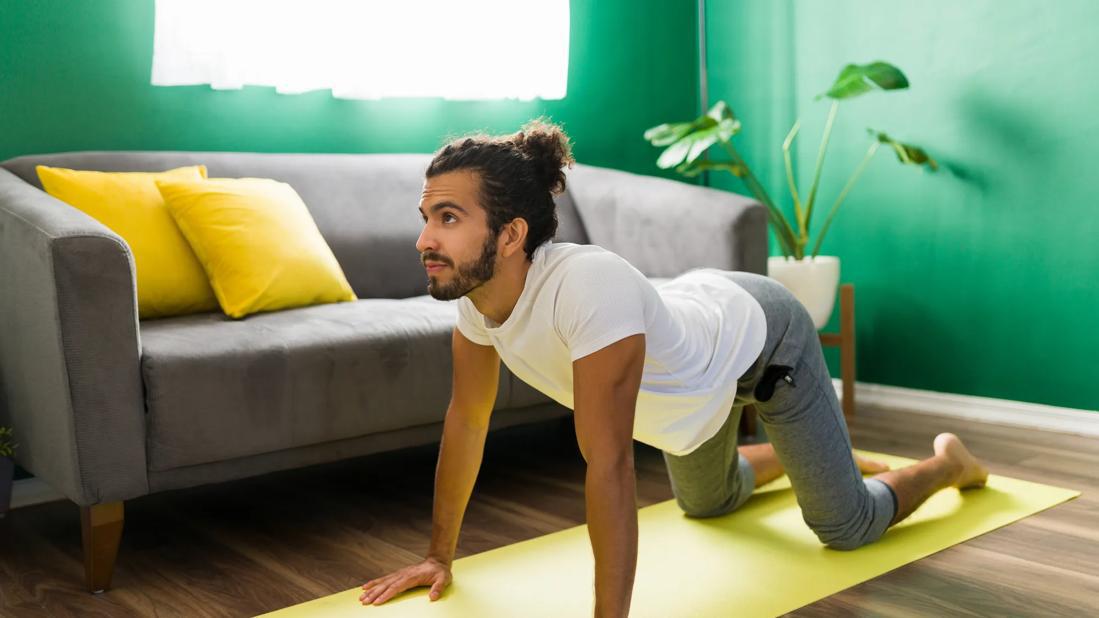
Somatic yoga is a yoga practice that employs a specific type of mindful approach to movement called “somatics.” It prioritizes thoughts, feelings and body awareness over form. The process is what matters, not athletic proficiency.
The concept of somatics has been around for centuries. But as a field of study, it’s fairly young. Within somatics, there are lots of different schools, styles and philosophies — just like there are lots of different types of yoga. We’re focusing on somatic yoga in general, not a specific school or theory.
So, how do you actually do somatic yoga — and what can you get out of the activity? Let’s find out from exercise physiologist David Creel, PhD.
How is somatic yoga different from yoga?
You may be wondering, isn’t yoga already somatic?
Traditional yoga — the kind that’s been practiced for millennia — is definitely somatic. It’s rooted in Southeast Asian religions and culture. The goal is to exert control over your body and mind, thereby opening yourself up for spiritual enlightenment.
Western yoga practices don’t always hold on to those spiritual and somatic elements. So, your yoga may or may not be somatic. It depends on the type you’re doing and the instructor.
“Some yoga instructors make their classes more like a strength training workout,” Dr. Creel observes. “If you want to practice in a group or studio setting, look for a class where the instructor is most focused on your thoughts, feelings and breathing. There shouldn’t be a lot of judgment of your movements and poses, as long as you’re doing them safely.”
Somatic yoga exercises
Any yoga pose or sequence can be somatic if you approach it with the right mindset. Here are five examples to get you started.
As you perform them, ask yourself: Where is your energy and how is it flowing through your body? If something feels tense or tight, that’s neither good nor bad. It simply is. Try using your mind and breath to relax the area. Listen with respect and curiosity to what your body tells you.
Remember: Your goal is to build a connection between your mind and body.
1. Corpse pose
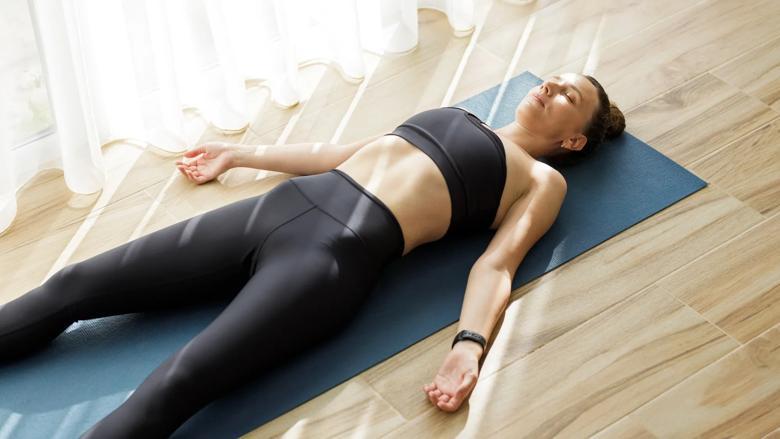
Savasana — commonly referred to as corpse pose — is a relaxation pose common in yoga practices. You simply lie on the floor or, if it’s more comfortable, in your bed. Your arms and legs should be fully extended.
In somatic yoga, instructors often put students in savasana to guide them through a body scan meditation. You can do this yourself by following these steps:
- Close your eyes or soften your focus. Turn inward instead of focusing on what’s happening around you.
- Allow your breathing to slow and deepen. As you exhale, let yourself sink deeper into relaxation.
- Bring your attention to the crown of your head. What do you feel? You don’t need to judge the sensations. Just notice them.
- Work your way down your body, observing the sensations in each area with interest and acceptance. You’re not trying to change anything. If you notice your mind drifting, gently redirect your attention to your body.
- Once you’ve inventoried everything down to the tips of your toes, gently return to the world. You may want to wiggle your fingers and toes or stretch to re-energize. When you’re ready, take a deep breath and open your eyes.
2. Child’s pose
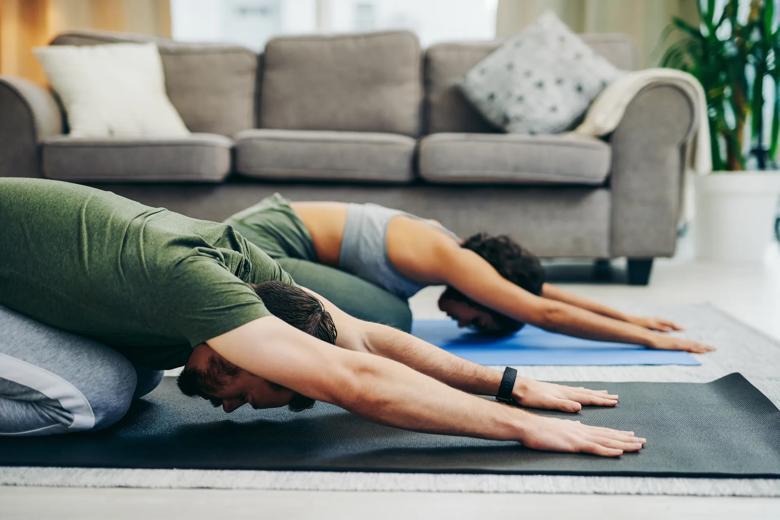
Balasana — or child’s pose — is a restorative pose that offers a nice, deep stretch. If the stretch is too deep, rest your forehead against a pillow or block.
- Start in a kneeling position with your knees hip-width apart and your big toes touching. If you’d like a deeper stretch, spread your knees farther apart. You want to be either sitting on your feet or as close to that position as you can comfortably reach.
- Take a deep breath in.
- As you exhale, bend your upper body forward without lifting your butt off your feet. Bring your forehead as close to the floor as you can.
- If you’d like to focus on relaxation, keep your arms by your sides. If you’d like to make the stretch deeper, put your arms out in front of you with your palms touching the floor.
- Taking long, slow breaths, hold this position for as long as you want.
- When done, slowly return to a seated position.
Consider skipping this pose — or checking with your provider — if you’ve got knee, heart or lung issues. If you’re pregnant, you may need to widen your knees to accommodate your baby bump.
3. Seated windshield wiper pose
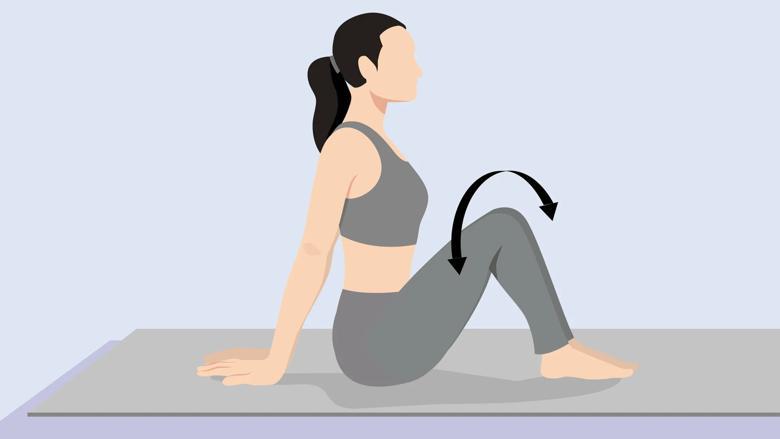
Upavistha jathara parivartanasana — also known as seated windshield wiper pose — involves sitting on the floor while gently twisting and stretching your hips.
- Sit on the floor with the soles of your feet touching each other in front of you. Plant your hands firmly on the floor behind you.
- Gently lean back and rotate your left hip inward, sliding your left foot out slightly as you do so. The goal is to get to the point where instead of your soles touching, your left knee is touching the sole of your right foot.
- Now — like a set of windshield wipers — rotate your left hip outward and your right hip inward. Now, your right knee is touching the sole of your left foot.
- Allow your windshield wiper legs to flow back and forth, slowly, in time with your breathing. If you’d like a longer stretch, hold each position for as many breaths as feels comfortable.
If you’re struggling to stay balanced or find getting your knees to the floor is painful, use rolled-up towels or a blanket for extra support.
If you’ve had a recent hip injury or surgery, this may not be the best pose for you. Stop if you feel pain in your hip or knee.
4. Bridge pose
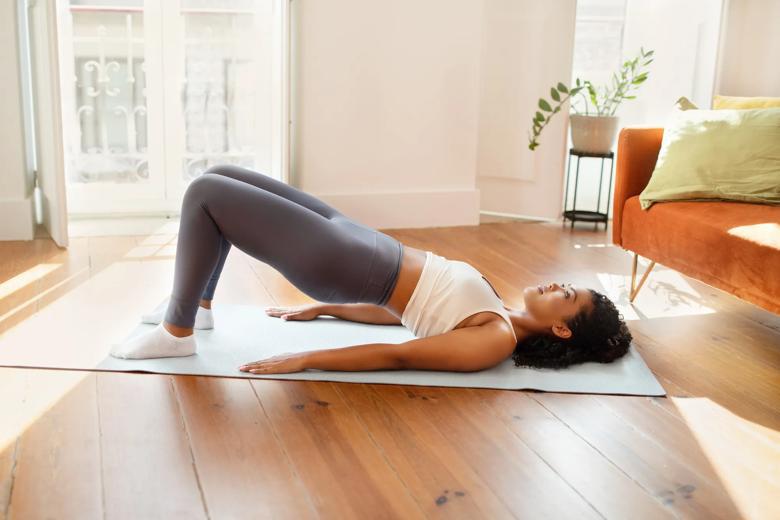
Setu bandha sarvangasana — or bridge pose — is a supine pose, meaning you start by lying on your back.
- Lie on your back with your feet on the ground and knees up and shoulder-width apart. Make sure your whole back is connected to the floor, even your lower back. This will require tucking your tummy slightly to engage your core muscles.
- Lift your hips toward the ceiling, keeping your core muscles tight. To accomplish this, you’ll be pushing into your arms and shoulders, as well as tightening your quads (thighs) and glutes (butt).
- Hold the pose for four to five breaths. If that’s not possible, try to hold for five seconds.
- Slowly lower yourself back to the ground.
You can also modify this pose in several ways, by:
- Placing your hands on your lower back while keeping your elbows grounded
- Placing a yoga block under your lower back to help you stay in the bridge
- Using cushions or pillows to create a slight bend, so you can focus on relaxation and breathing
5. Cat-cow pose
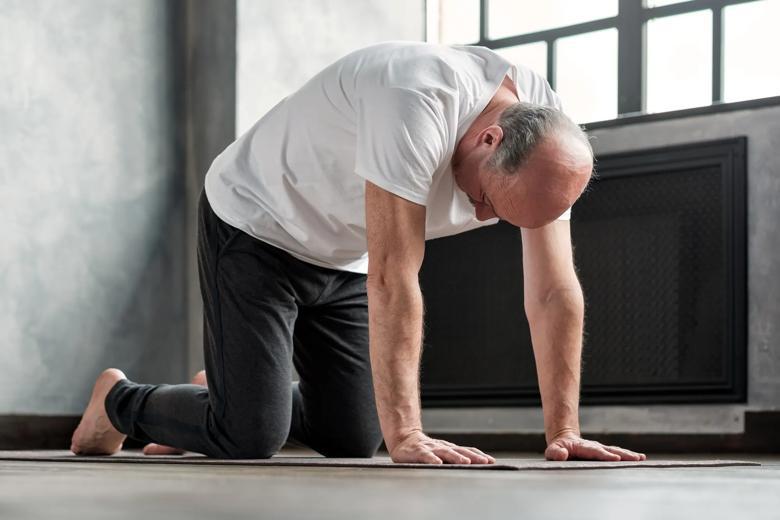
Chakravakasana — or cat-cow pose — is a yoga sequence where you alternate between arching (bitilasana) and rounding (marjaryasana) your back. It’s a great way to stretch your spine. If getting onto all fours isn’t safe or comfortable for you, you can also practice this sequence in a chair.
- Kneel on the floor with your hands down in front of you, about shoulder-width apart. Your legs should be bent at a 90-degree angle. Your back should be flat like a tabletop.
- As you inhale, slowly drop your tummy toward the ground, allowing your back to dip as you lift your bottom. Tilt your head toward the ceiling. Breathe in and hold the pose.
- As you exhale, lift your back toward the ceiling and drop your head to look at the ground. You’ll look sort of like the hissing black cat you see on Halloween decorations.
- Repeat the sequence several times, switching the positions with each slow, even breath.
Somatic yoga benefits
Somatic yoga comes with all the standard benefits of a traditional yoga practice. Somatic yoga may:
- Improve balance, strength and flexibility:Even the most relaxing forms of yoga, like restorative or yin yoga, stretch and strengthen your muscles.
- Enhance body awareness:Proprioception is your ability to sense where your body is and how it moves in space. Somatic exercise hones this sense by improving your balance and coordination.
- Boost mental health:Somatic yoga releases happy hormones and reduces stress to lift your mood. The lift you get from this mindfulness practice can follow you throughout the day.
- Improve sleep:A calmer mind, tired body and less pain are a few ways a somatic yoga practice promotes deep, restful sleep.
- Supports trauma recovery:Somatic yoga may help you heal your body-mind connection and reduce PTSD symptoms. If that’s one of your goals for a yoga practice, be sure to work with instructors who specialize in trauma-informed yoga.
- Reduce chronic pain:Somatic yoga helps your body relax and release tension. Depending on the root cause of your pain, it could even reduce your symptoms.